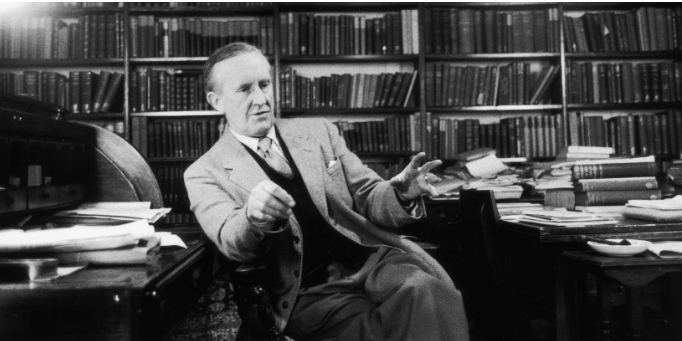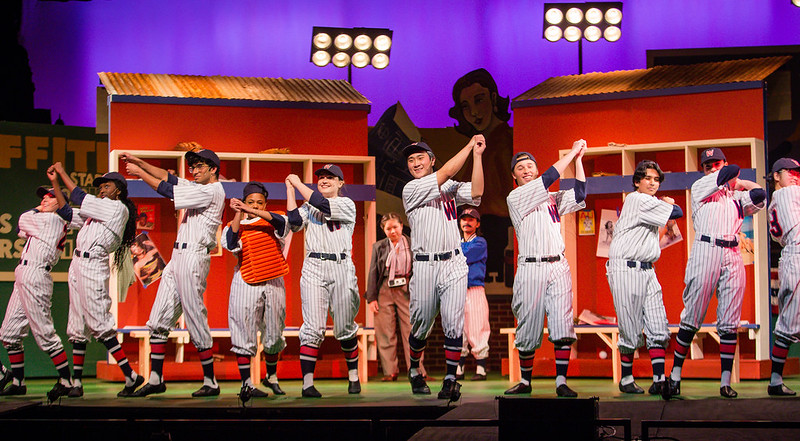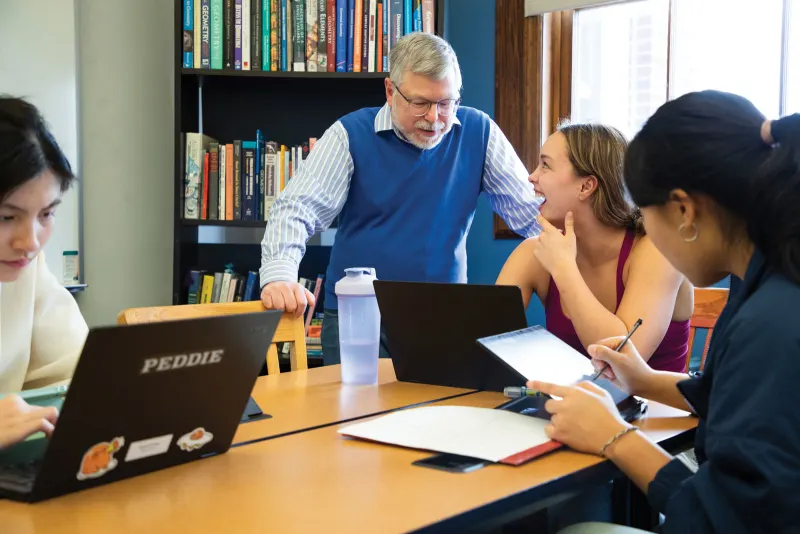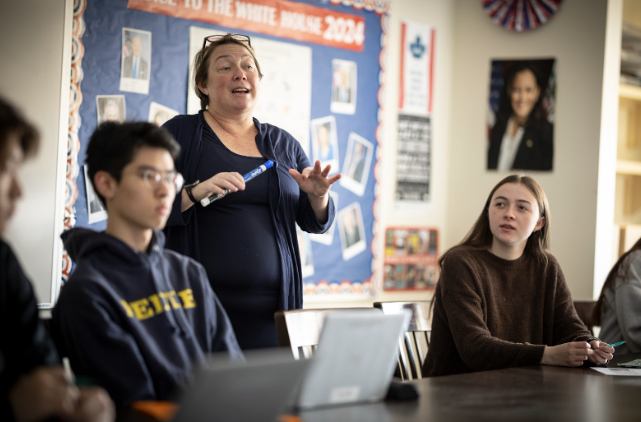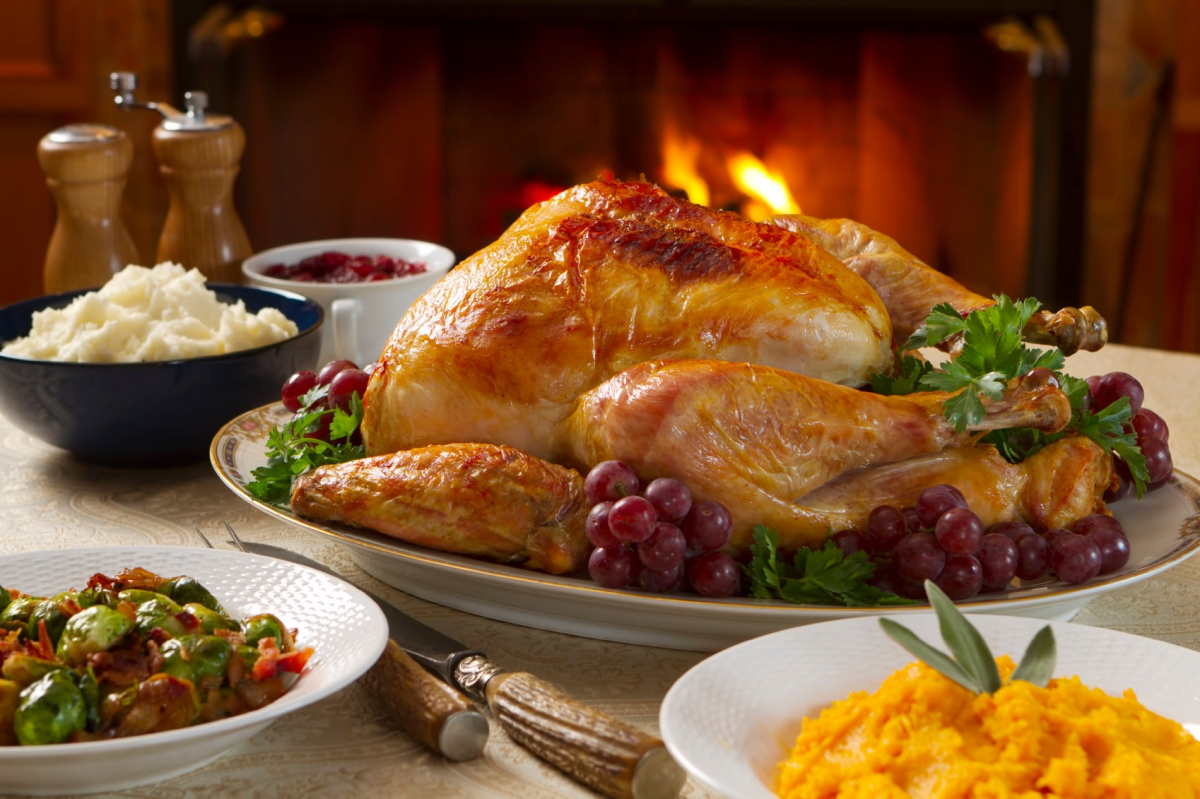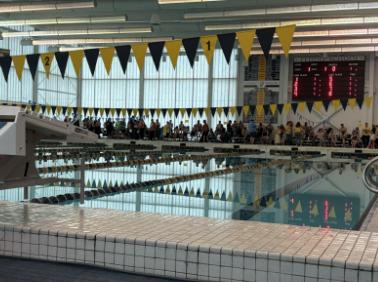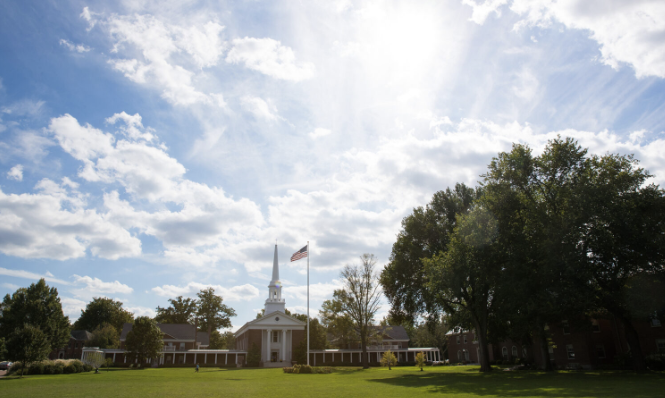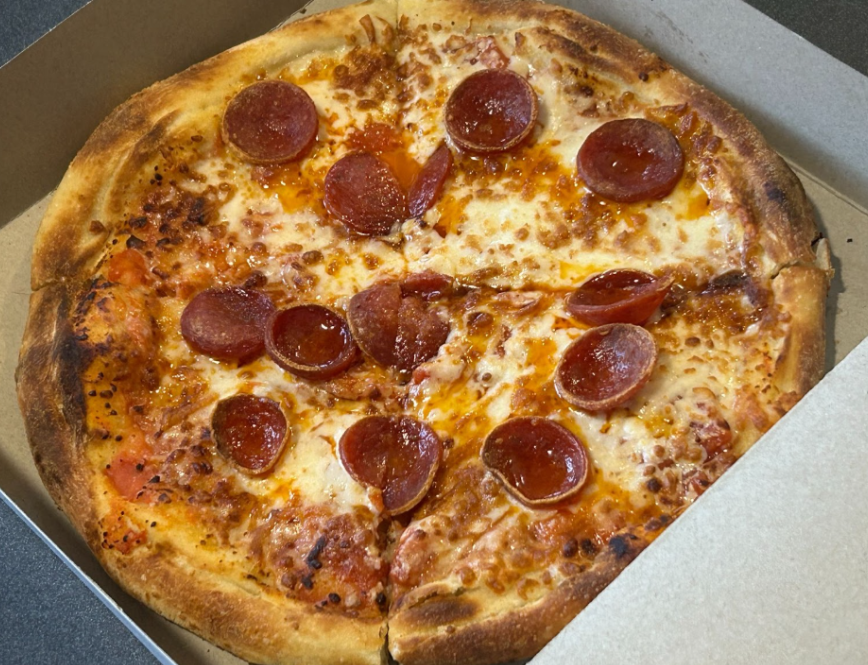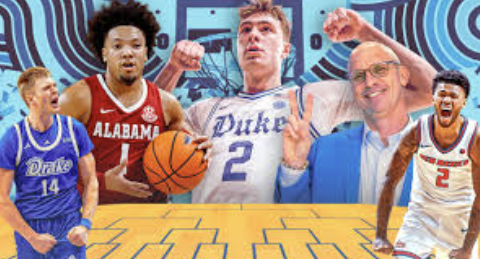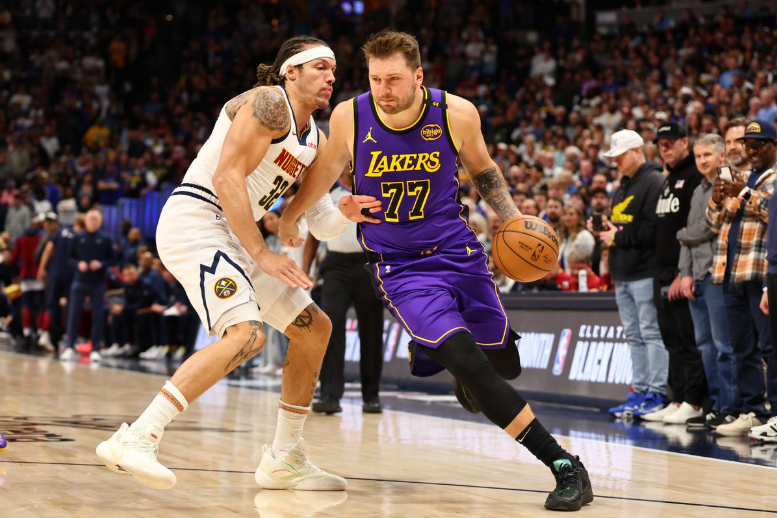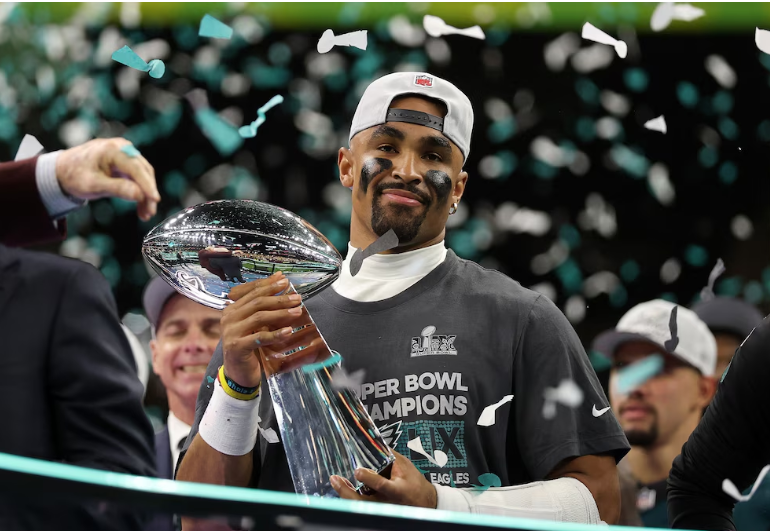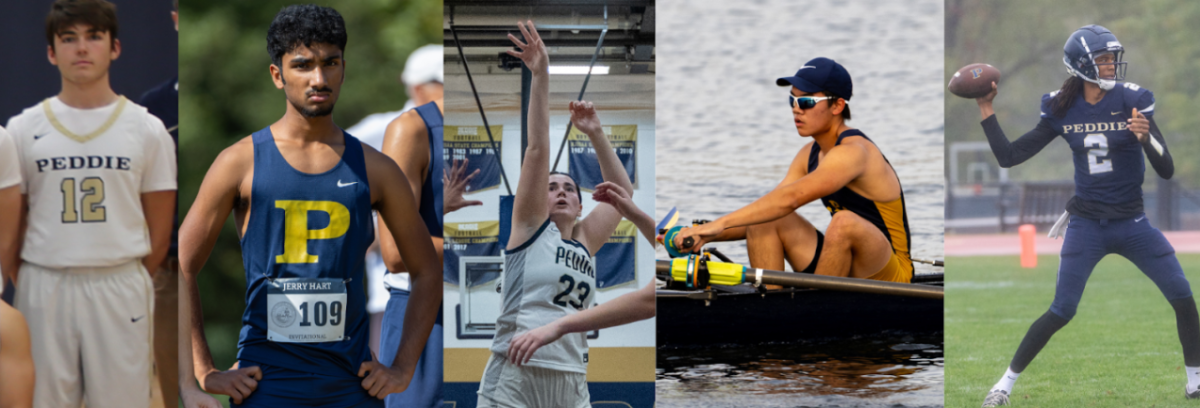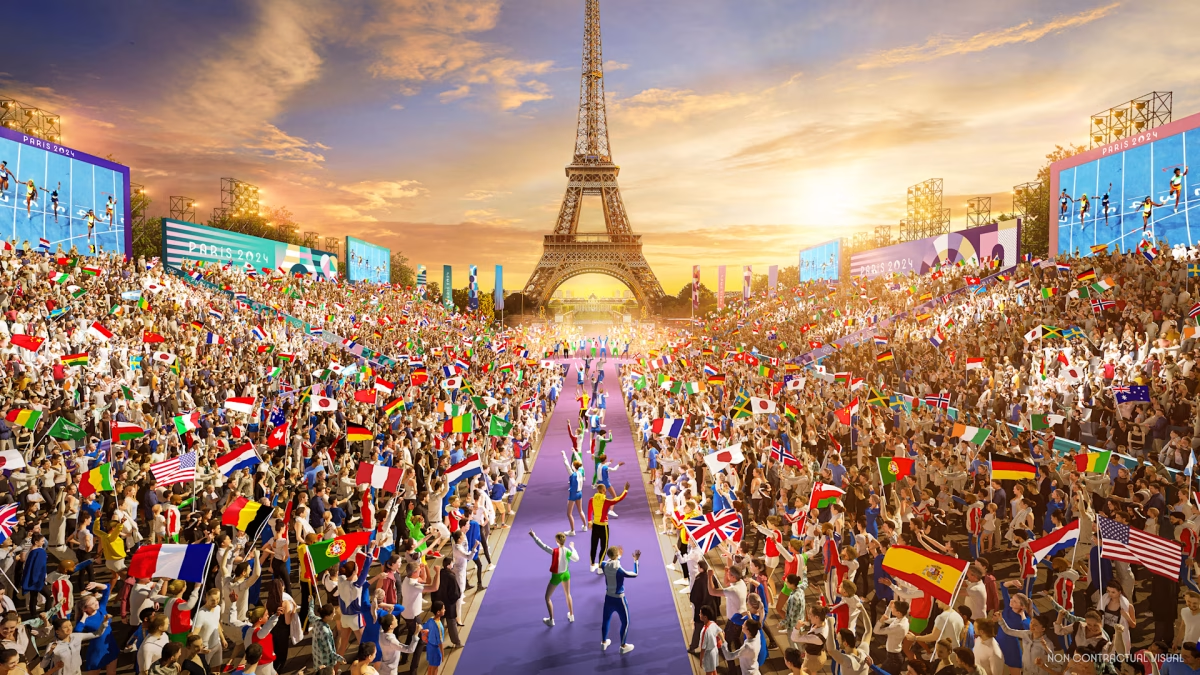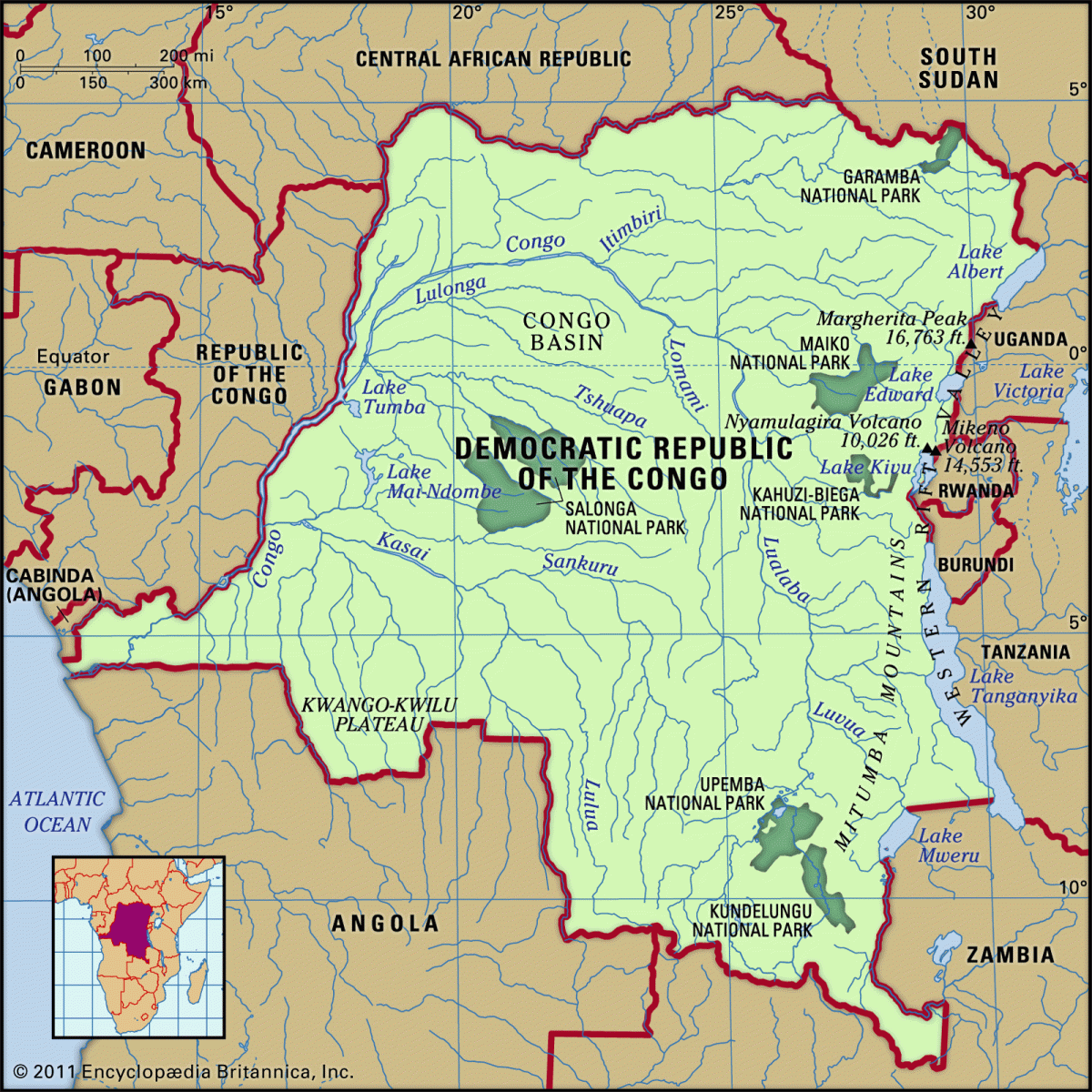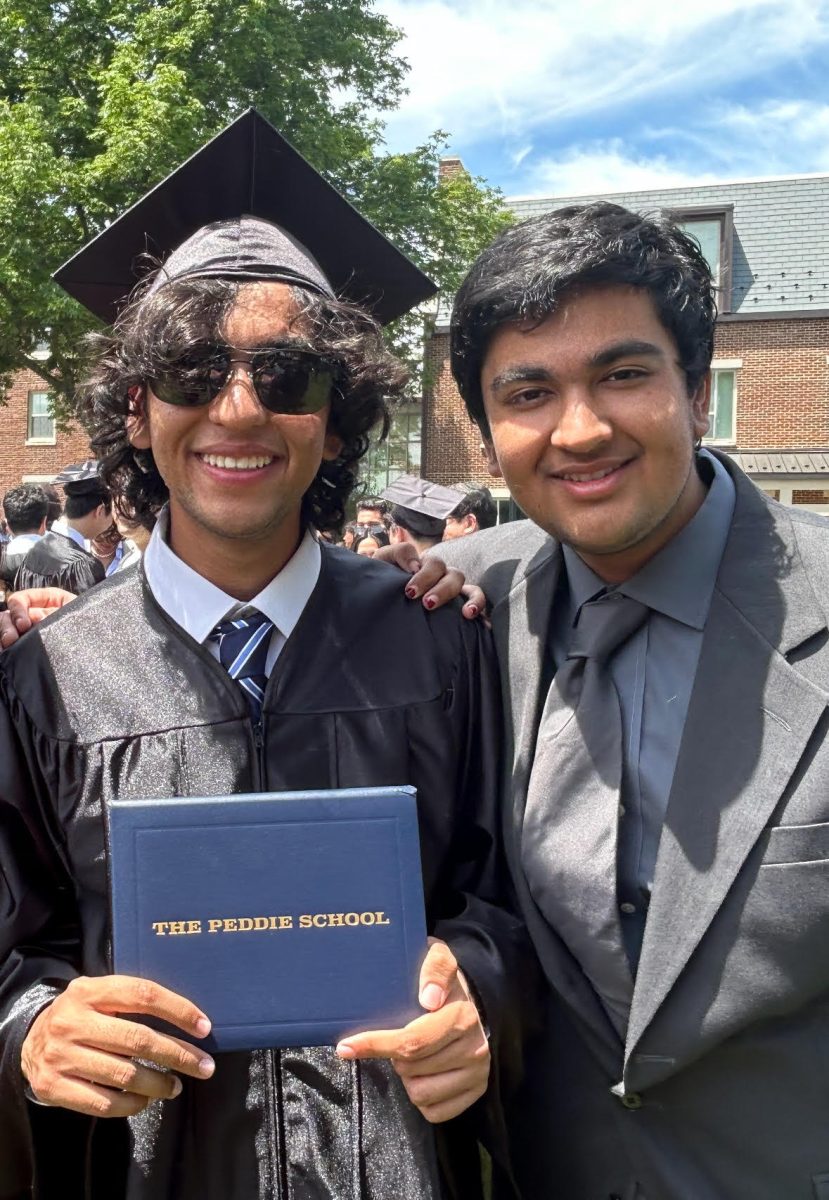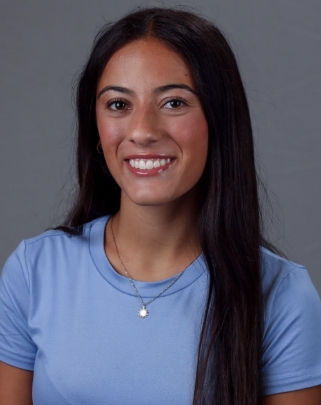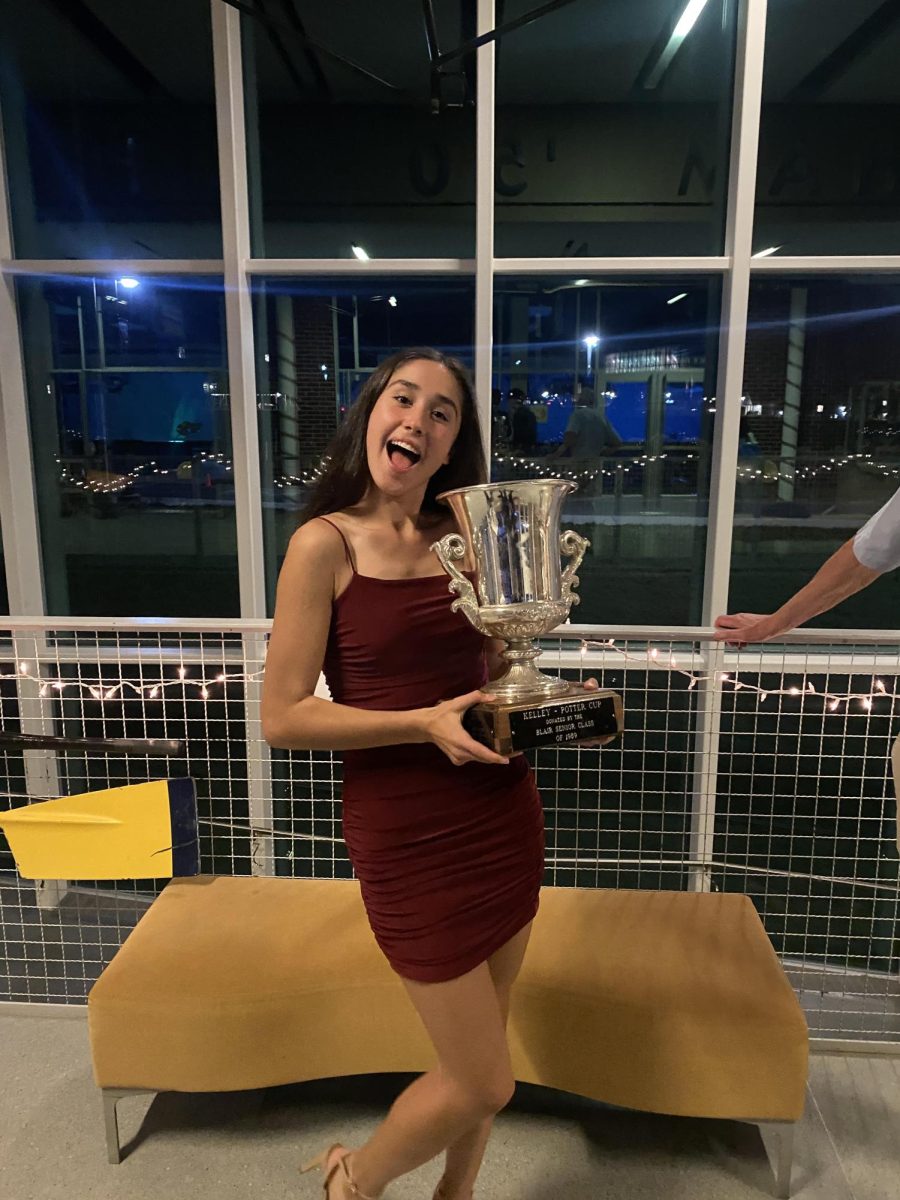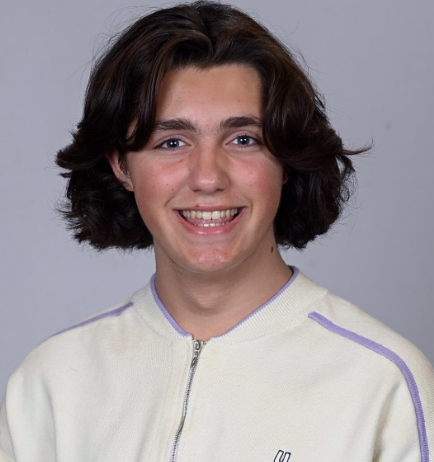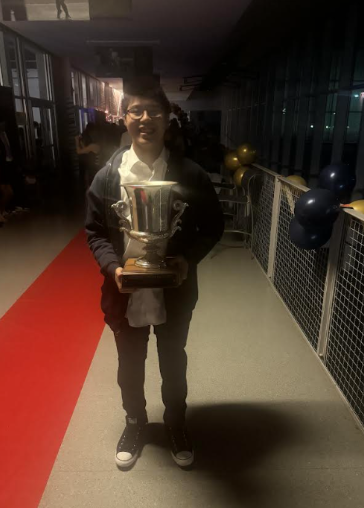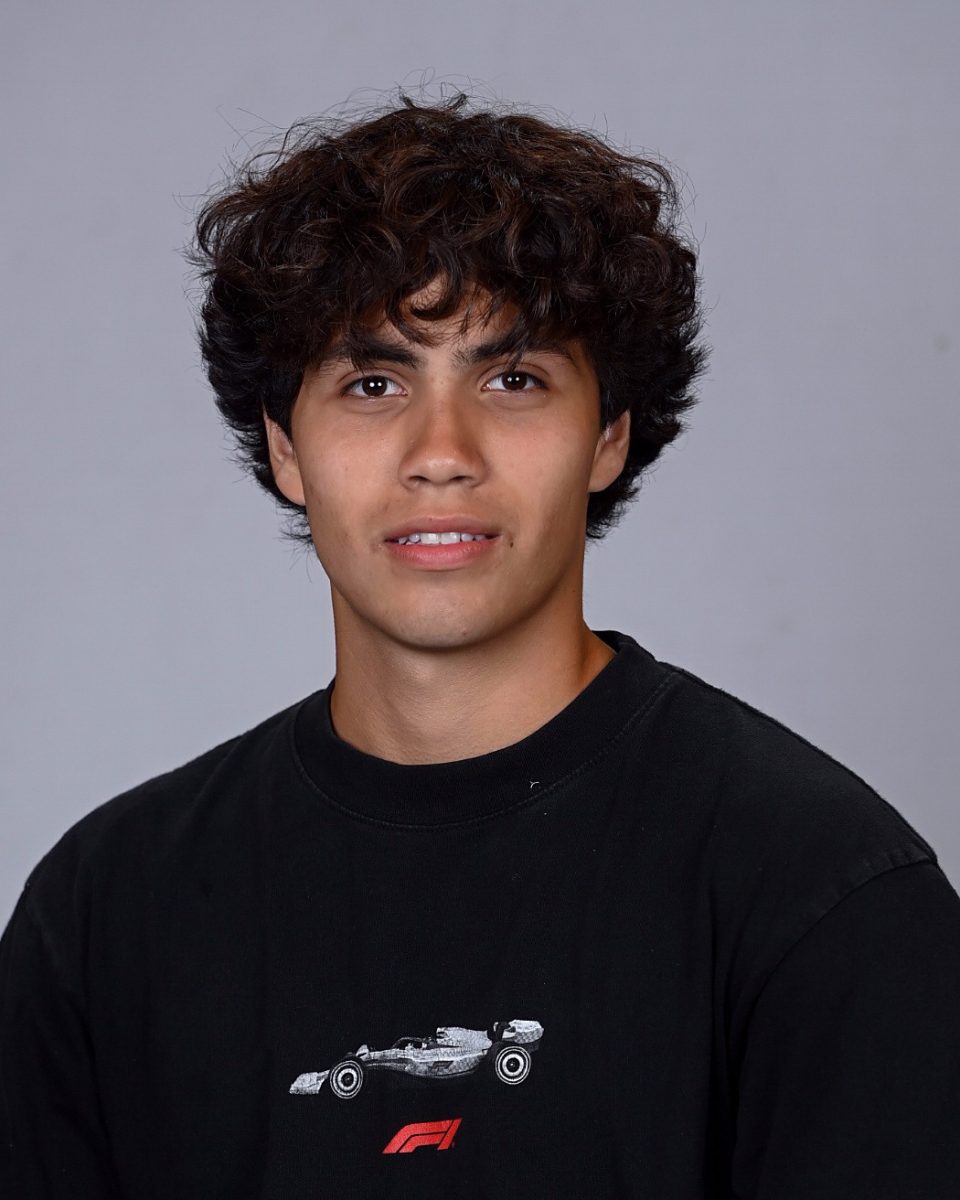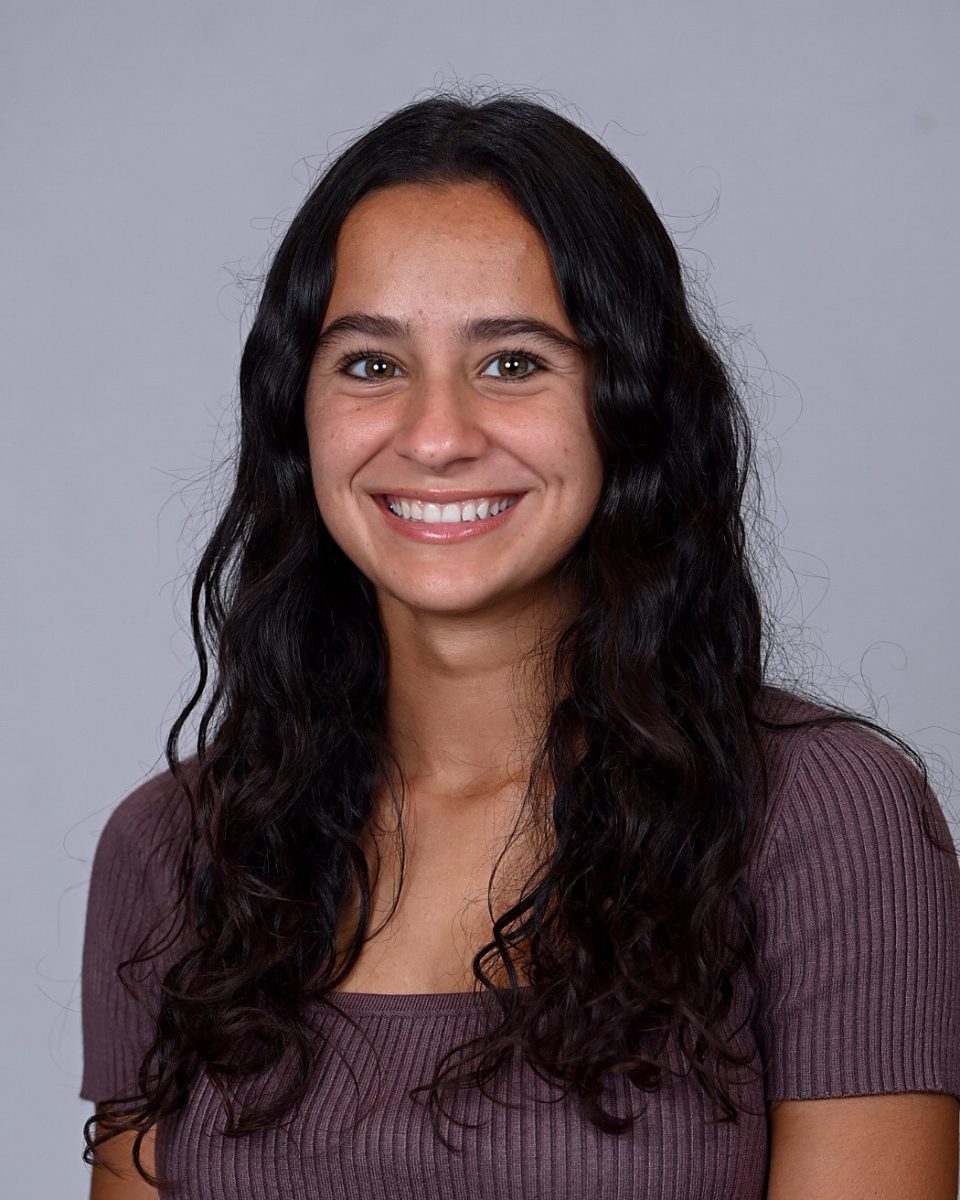The Peddie robotics team, FRC5895, just finished up an incredible 2025 season at the FIRST Championship in Houston this past week! This marks our tenth year participating in this robotics competition and one of our most successful ones to date. Now, with the season officially rounded off, let’s go through a recap of the entire thing:
FRC, or FIRST Robotics Competition, is a global robotics challenge for high school students. The founding organization, FIRST, creates a game every year, and students on the team must then design, manufacture, build and program a robot that responds to the game’s objectives. The robot is entirely worked on by students, and students drive the robot and perform maintenance on it during competitions. Team mentors still have a large impact on the robot and team, and Peddie has four excellent mentors who have steered our team on an incredibly successful path.
Throughout the season, students then take their robot to compete at regional, district (if they qualify) and then finally global (if they qualify) events. This year, Peddie competed at the regional Montgomery and Seneca events, the First Mid-Atlantic District Championships and the World Championships in Houston.
Robots compete in alliances of three. At the beginning of the event, there is a fixed number of “qualification matches,” where all the teams compete in a certain number of matches (usually around 10-12 each) in randomized alliances. Here, the teams compete with each other to rank as high as they can. After the qualification matches, the top eight ranked teams act as captains and use a pick draft to craft their own alliances of three. These eight alliances then enter a double-elimination bracket (if you lose twice, you’re out) until only one alliance is left standing. The finals are always played best out of three.
A side note about team names, numbers, and stylization: Each team has a registered number indicating when they registered. For example, Peddie is 5895, so they were the 5895th team to register. Teams are usually referred to by number. Teams also have team names: Peddie’s is Peddie Robotics. (When introducing a team, I will usually state their FRC number and then the team name, so Peddie would be FRC5895 Peddie Robotics.)
5895’s first events were at Seneca High School and then Montgomery High School, where we faced off against around 30 regional teams over a span of two days. Ultimately, Peddie ranked first in both events and was able to win both.
The FIRST Mid-Atlantic (FMA) District encompasses the active teams in New Jersey, Pennsylvania and Delaware, and the top 60 teams from this region compete at the FMA District Championships, which took place April 2-5. This event is significantly longer than the previous regional events, having more teams and competing at a higher level. Having qualified, Peddie headed to compete at the District Championships at Lehigh University in Philadelphia. After two days of qualification matches, Peddie ultimately ranked third. FRC341 Miss Daisy ranked first, with FRC2607 The Fighting Robovikings finishing in second. Ultimately, Peddie was selected by team 341 to compete in Alliance 1, and later, FRC3142 Aperture joined their alliance.
Alliance 1 advanced all the way to the finals without losing a game and faced off against Alliance 2, consisting of 2607, FRC3314 The Mechanical Mustangs and FRC11 M.O.R.T. In the finals, played best of three, Alliance 1 lost the first game, won the second, and unfortunately lost the third to the very well-played Alliance 2, losing the district championships overall. Still, as district finalists, we were able to advance to the Houston championship.
The FRC World Championships (widely known as “Worlds”) took place in Houston from April 16-19. From the larger Peddie team, a smaller selection of students flew to Houston on April 15 and engaged in the competition, returning on April 21.
Since 600 teams come to compete in Worlds, the competition is split into divisions, each named after a famous scientist: Archimedes, Curie, Daly, Galileo, Hopper, Johnson, Milstein and Newton. Each division includes around 75 teams, who compete under regular conditions. The winning alliances of each division then enter the Einstein division, where they compete in the double-elimination bracket structure to ultimately determine a world champion.
Peddie was assigned to the Milstein division. At the end of two days of qualification matches, we were selected by the number 2 seed, FRC118 Robonauts. This Alliance 2 ultimately consisted of us (5895), 118, FRC324 Chips and FRC957 The Swarm (who acted as a backup team). Alliance 2 ultimately made it to the finals, where we faced Alliance 1, consisting of FRC5940 Bread, FRC254 The Cheesy Poofs, FRC1477 Texas Torque and FRC1318 Issaquah Robotics Society.
Alliance 2 lost the first game, won the second game (by one point!), and then won the third game, making us the winners of the 2025 Milstein Division and allowing us to advance to Einstein. Peddie has only advanced to Einstein once before, in 2023, also having been a winner of the Milstein Division. For our partner 118, this was their first Einstein appearance since 2017, and for 324, this was their first-ever Einstein appearance.
Einstein is a notoriously difficult accomplishment to achieve and cements a team’s status as one of the top eight alliances in the world. This is no small feat that even the best teams around the world struggle to accomplish, and this year, Peddie played against and side by side with some of the most elite teams that FRC has to offer. For example, our partners 118 are sponsored by NASA and have the second-highest number of event wins in FRC. Our incredible opponents on Alliance 1 included team 254, which has the first-highest number of event wins and the highest record of Einstein appearances (10), world championship wins (5) and world finals appearances (9). For Peddie, this year has been one of our most competitive and high-performing years — at our peak, we ranked #1 in New Jersey, #1 in FMA, and #24 in the world.
The team encompasses two broad sub-teams: engineering and programming. Amongst the engineers, students design the robot using CAD software, manufacture parts using machines like the CNC mill, router, lathe, etc., and assemble the robot. Amongst the programmers, students use code to automate robot actions, including coding a fully autonomous 15-second period of scoring. A team of students also works on the wiring and electrical setup of the robot. Each student contributes to the team’s social and working environment in their own way, creating a dynamic and tightly knit team.
Robotics is a time-consuming and difficult activity, but ultimately an intensely rewarding one that has a unique way of bringing people together, whether within the team or with other teams from all around the world. “I’m happy the long hours we put in to work on the robot paid off and that we did so well,” said team member Jayden Li ’26.
Let’s hope for an equally successful season next year, and congratulations to the robotics team for a stellar performance and end to the season!

